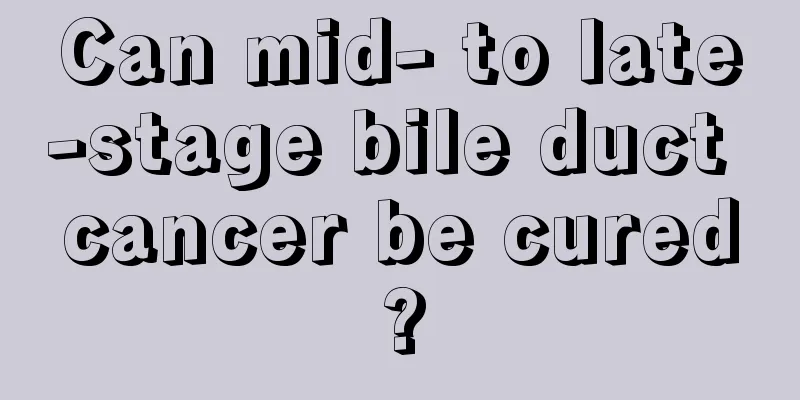What to do with lumbar edema

|
Lumbar edema is very common in daily life. It not only affects people's normal life and work, but also causes great harm to people's bodies. Therefore, it is particularly important to find a scientific and effective treatment method. Patients can treat lumbar edema through bed rest and traction therapy. If they persist for a period of time, they will see good results. Friends in need can also try it. 1. What causes lumbar edema? 1. Degenerative changes of the lumbar intervertebral disc are the basic factors. The degeneration of the nucleus pulposus is mainly manifested as a decrease in water content, and can cause small-scale pathological changes such as vertebral instability and loosening due to water loss; the degeneration of the annulus fibrosus is mainly manifested as a decrease in toughness. 2. Injury: Long-term and repeated external forces cause minor damage, which aggravates the degree of degeneration. 3. Weaknesses of the intervertebral disc’s own anatomical factors: The intervertebral disc gradually lacks blood circulation after adulthood and has poor repair ability. On the basis of the above factors, some inducing factors that may cause a sudden increase in the pressure on the intervertebral disc may cause the less elastic nucleus pulposus to pass through the annulus fibrosus that has become less tough, causing nucleus pulposus herniation. 4. Genetic factors: There are reports of familial incidence of lumbar disc herniation. 5. Congenital abnormalities of the lumbar sacrum include lumbar sacralization, sacral lumbarization, hemivertebra deformity, facet joint deformity and articular process asymmetry. The above factors can change the stress on the lower lumbar spine, resulting in increased intra-disc pressure and susceptibility to degeneration and injury. 6. Inducing factors: On the basis of intervertebral disc degeneration, certain factors that can induce a sudden increase in intervertebral space pressure can cause nucleus pulposus herniation. Common inducing factors include increased abdominal pressure, incorrect waist posture, sudden weight bearing, pregnancy, cold and moisture. 2. Clinical manifestations of lumbar edema 1. General signs (1) Lumbar scoliosis is a postural compensatory deformity that relieves pain. Depending on the location of the nucleus pulposus protrusion and the relationship between the nerve roots, the spine may bend toward the healthy side or the affected side. If the protrusion of the nucleus pulposus is located on the inner side of the spinal nerve root, the lumbar vertebra will bend toward the affected side because bending the spine toward the affected side can reduce the tension of the spinal nerve root. Conversely, if the protrusion is located on the outer side of the spinal nerve root, the lumbar vertebra will mostly bend toward the healthy side. (2) Limited lumbar movement Most patients have limited lumbar movement to varying degrees, which is particularly obvious in the acute phase. Among them, the most obvious is the limitation in flexion, because the flexion position can further promote the posterior displacement of the nucleus pulposus and increase the traction on the compressed nerve roots. (3) Tenderness, percussion pain, and sacrospinal muscle spasm The location of tenderness and percussion pain is basically consistent with the intervertebral space of the lesion, and 80% to 90% of cases are positive. The percussion pain is most obvious at the spinous process, which is caused by the vibration of the diseased area caused by percussion. The tenderness point is mainly located 1 cm beside the vertebrae, and radiating pain may occur along the sciatic nerve. About 1/3 of patients have lumbar sacrospinal muscle spasm. Low back pain is the first symptom in most patients, with an incidence of about 91%. Because the outer layer of the annulus fibrosus and the posterior longitudinal ligament are stimulated by the nucleus pulposus, induced pain in the lower back is produced through the vertebral nerve, sometimes accompanied by buttocks pain. 3. What to do with lumbar edema Most patients with lumbar disc herniation can be relieved or cured through non-surgical treatment. The treatment principle is not to restore the degenerated and protruding intervertebral disc tissue to its original position, but to change the relative position of the intervertebral disc tissue and the compressed nerve root or partially retract it, thereby reducing the pressure on the nerve root, loosening the adhesion of the nerve root, eliminating the inflammation of the nerve root, and thus alleviating the symptoms. Non-surgical treatment is mainly suitable for: 1. young patients, first-time patients or patients with a short course of illness; 2. patients with mild symptoms that can be relieved by themselves after rest; 3. patients with no obvious spinal stenosis on imaging examination. (1) Absolute bed rest: When the disease first occurs, you should strictly rest in bed, and emphasize that you should not get out of bed or sit up to urinate or defecate. This will achieve better results. After 3 weeks of bed rest, you can get up and move around while wearing a waist belt for protection, and do not bend over or hold objects for 3 months. This method is simple and effective, but difficult to stick to. After remission, you should strengthen your back muscle exercises to reduce the chance of recurrence. (2) Traction therapy uses pelvic traction to increase the width of the intervertebral space, reduce the intradiscal pressure, retract the protruding disc, and reduce stimulation and compression on the nerve roots. It needs to be performed under the guidance of a professional doctor. |
<<: How to remove liquid eyeliner
>>: Causes of pain in the rib cage
Recommend
Dietary considerations for ovarian cancer
Ovarian cancer is one of the most common gynecolo...
What to do with congenital hip dislocation
The hip joint clinically refers to the area aroun...
Is surgery for ankylosing spondylitis good or not?
Ankylosing spondylitis is a relatively common dis...
What kind of spray is better for killing mites on the bed?
Mites are very annoying parasites. They mainly li...
Is green tea good for the liver?
The human liver is a relatively critical organ. S...
Clinical manifestations of different types of melanoma
Among surgical diseases, melanoma is something th...
Are the flowers of the osmanthus tree edible?
Most of the flowers of the osmanthus tree are edi...
What are the symptoms of advanced prostate cancer
Prostate cancer is the most likely malignant tumo...
Can dilute sulfuric acid dry ammonia?
Ammonia is a colorless and odorless gas that can ...
How much fruit should you eat every day? Here are 5 suggestions for eating fruit
Now there are a variety of fruits in our country,...
What are the treatments for colon cancer
Colorectal cancer is a common malignant tumor in ...
Which acupoints should be massaged for constipation? Acupoint massage method for constipation
For friends who suffer from constipation, if you ...
Can I still eat olive oil after it’s expired for several months?
Some families buy olive oil, but because they don...
Why does eating beans make you fart
We all know that farting is a normal physiologica...
Causes of increased abdominal pressure
Many of our friends may have encountered the prob...









